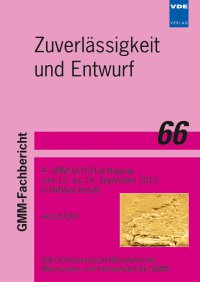A new physics-based NBTI model for DC- and AC-stress enabling accurate circuit aging simulations considering recovery
Conference: Zuverlässigkeit und Entwurf - 4. GMM/GI/ITG-Fachtagung
09/13/2010 - 09/15/2010 at Wildbad Kreuth, Germany
Proceedings: Zuverlässigkeit und Entwurf
Pages: 8Language: englishTyp: PDF
Personal VDE Members are entitled to a 10% discount on this title
Authors:
Schlünder, Christian; Reisinger, Hans; Gustin, Wolfgang (Infineon Technologies AG, 81726 Munich, Germany)
Grasser, Tibor (Institute for Microelectronics, TU Wien, Wien, Austria)
Abstract:
Aging circuit simulators require a correct and not too complex device degradation model for accurate aging predictions. But the physical origin of the Negative Bias Temperature Instability (NBTI) as the most important device degradation mechanism is still not fully understood and under debate. Especially the recovery- and accordingly the AC-stress-behavior are not mapped correctly by current commercial aging simulators. In this work we present and verify a new, physics-based, quantitative model allowing a precise prediction of NBTI degradation and recovery. This model takes the stress history into account and also provides a prediction for degradation due to AC-NBTI and an understanding of the special features seen in conjunction with AC-NBTI. As groundwork we analyze the single defects constituting NBTI. A new measurement technique stimulating a controlled discharge of these defects will be introduced. By employing a statistical analysis of many stochastic stimulation processes of the same defect we are able to determine the electric field and the temperature dependence of these defects with great precision. This new understanding and model can build the base for an accurate aging circuit simulation integrated within the standard design flow. Lifetime enhancement due to recovery during stress intermissions and/or during AC-stress can be calculated with high precision.


